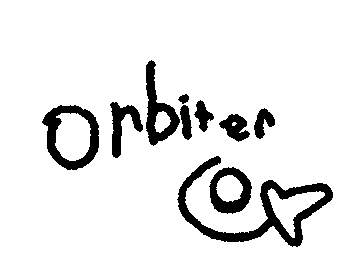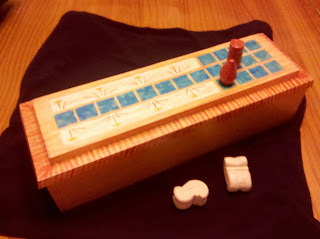Here's an example of where an experiment with one of our early Senet boxes led to a surprising result. We painted the crane images on bare, untreated pine using egg tempera, and THEN applied the stain. The paint itself was stripped off, leaving somewhat ghostly silhouettes. This technique needs perfecting, but we were very happy with the results, despite the loss of the original colors.
Tuesday, December 28, 2010
Wednesday, December 15, 2010
20 Square (Tjau) board and pieces
This picture shows one of our 20-Square (Tjau) boards, with prototype game pieces and a set of knucklebones for dice. The pieces were sculpted in clay and then cast in resin; we'll probably create molds to easily create complete sets for each game board.
Tjau boards were well known during the same time as Senet, and could be often found on the opposite side of Senet boards. This particular set has a Senet board on the flip side of the lid.
Labels:
ancient games,
boardgames,
Egypt,
knucklebones,
Senet,
Tjau
Sunday, December 12, 2010
Knucklebones
Hand-carved knucklebones. In addition to throwing sticks, the ancient Egyptians used knuckbones (early dice, from a bone in the ankle of a sheep). We carved these from pine using a picture of King Tut's ivory Senet board set as a guide.
Monday, December 6, 2010
Senet gameboard box blanks
Cut and assembled the frames of two more senet gameboards today. Right now we're keeping with dimensions of 2.5"x5"x14", mainly using 3/8" pine stock. For the joints we're using fingerjoints right now, but most of the boxes we've created so far have standard mitered joints. Tomorrow I'll cut the grooves and fit the box floors, cut from red oak plywood, as well as the box lid/gameboards.
Saturday, December 4, 2010
Riverbank scene, draft to final
Variations of riverbanks scenes were the first styles we applied to our Senet boxes. The concept is penciled in, then we paint it using it egg tempera.
Subscribe to:
Posts (Atom)







